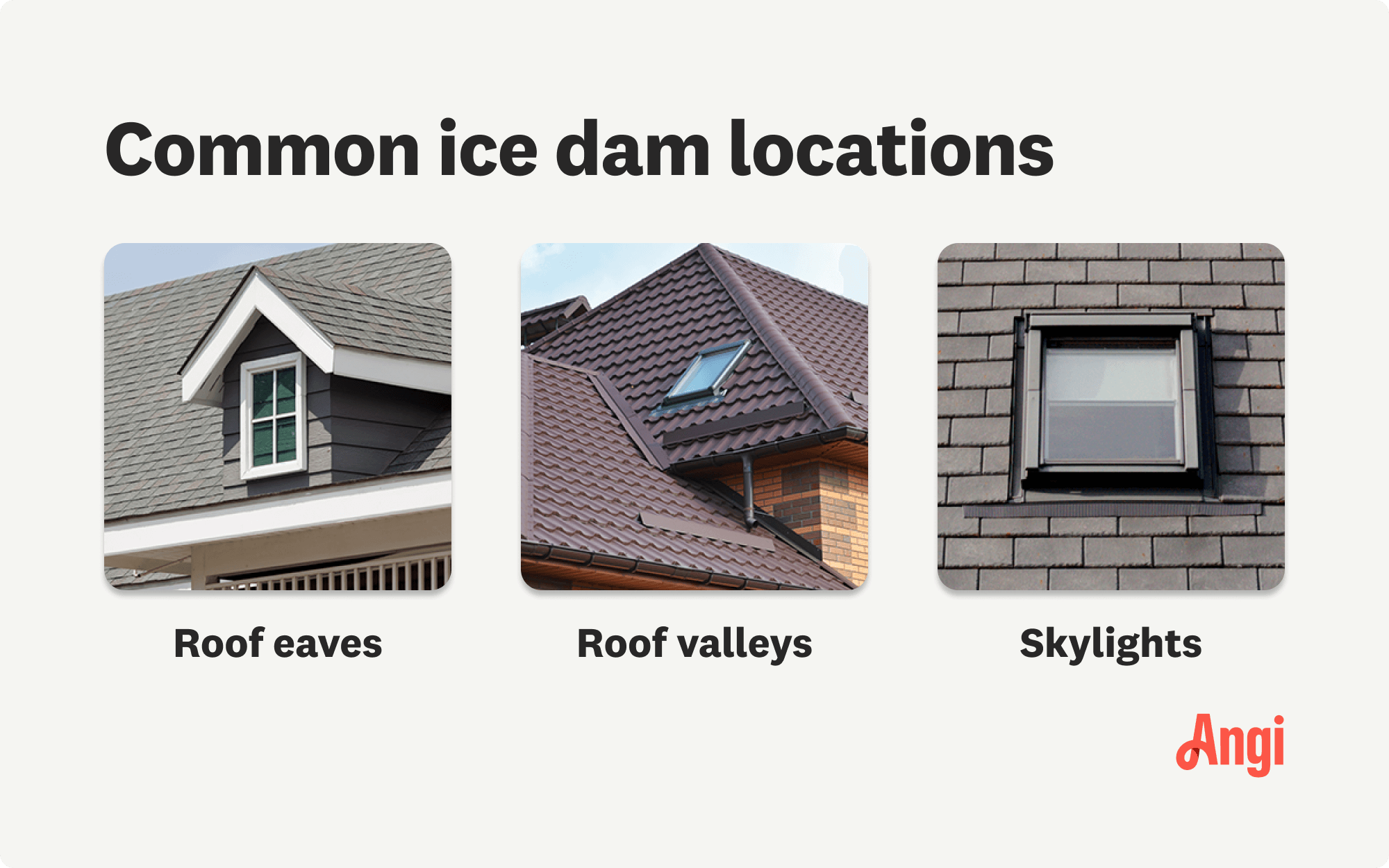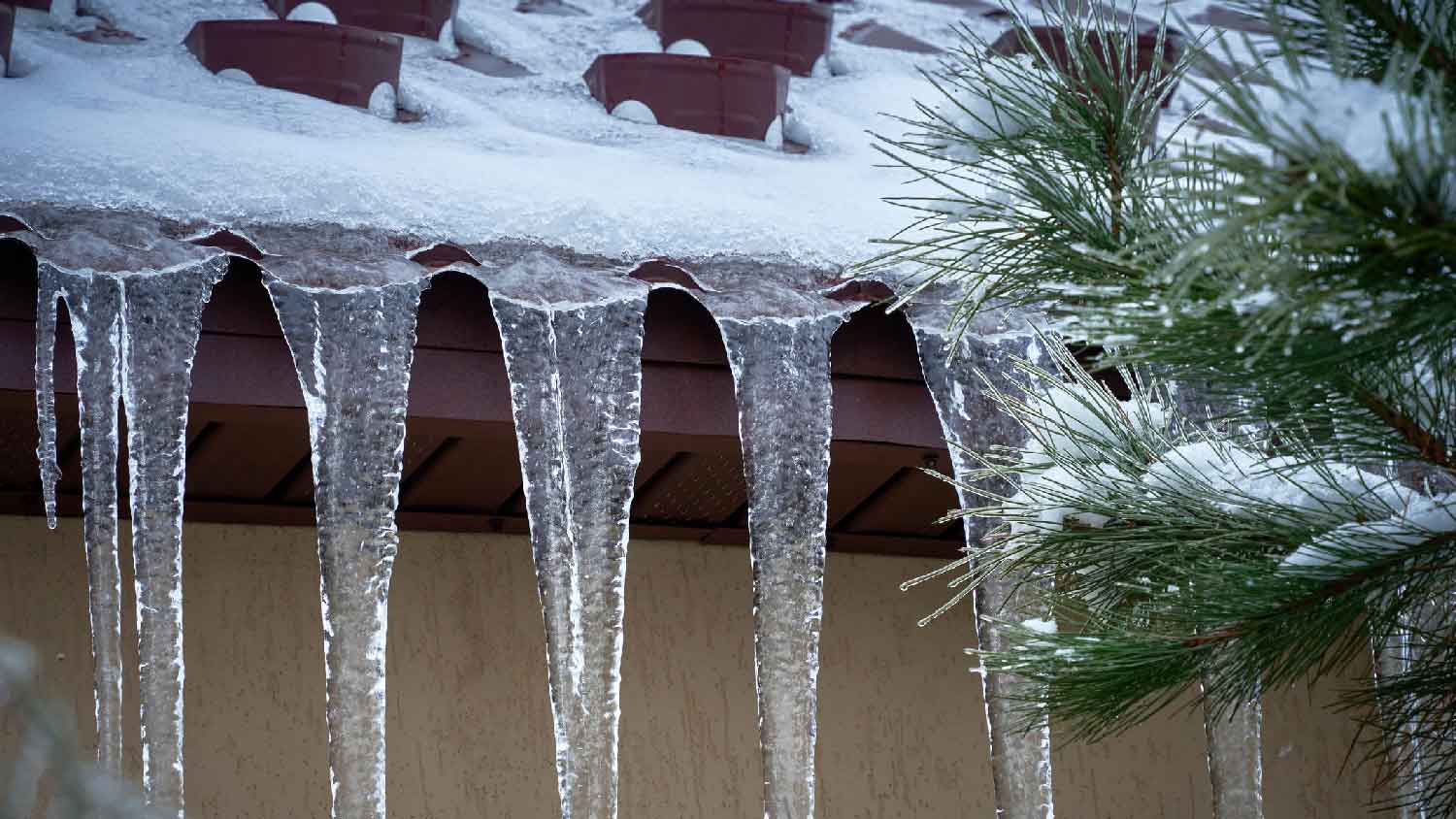
Discover the average cost of roof snow removal, key price factors, and ways to save. Get transparent estimates to protect your home this winter.
Test your metal roof’s mettle against these winter dangers


Ice dams can cause severe damage to your roof, gutter system, and home’s interior.
Metal roofs offer protection against ice dams due to their construction and materials.
Snow stops installed on metal roofs may make ice dams more likely to form.
Ice dams are never a welcome winter sight. These ice formations can damage your roof and your home, but a metal roof may help you avoid the problems ice dams can cause. Learn more about ice dams and why metal roofs offer some protection against these damaging winter hazards.
Ice dams form when accumulated snow on a roof begins to melt, travels down to the roof’s edge, and then refreezes. A repeated freeze/thaw cycle causes ice dams, so they tend to happen when temperatures during the day rise above freezing or snow melts in direct sunlight.
Once the temperature drops back down after the sun goes down, the melted water forms a large chunk. Clogged gutters can cause ice dams—if melting snow has no way to drain off the roof because the gutters are full of ice, leaves, or other debris, it will refreeze before it’s directed off the roof via the drainage system.

Signs of an ice dam include water on the interior of your home, usually on the underside of the roof or high up on walls, chunks of ice along the roof’s edge, one side or section of your roof with little to no snow but lots of snow lower on the roof, and icicles forming on the eaves or gutters.

Not only can ice dams cause roof damage, they can damage the interior of your home as well. When ice dams are blocking melting snow from draining off the roof, the water is forced up underneath the shingles and can cause leaks, mold growth, and structural instability.
Hiring a local roof cleaning company to remove accumulated snow from traditional shingled roofs can help avoid ice dams, but having a metal roof may be enough to prevent these damaging formations.
Your attic should be similar temperature to outside, which eliminates the melting on the roof which then will eliminate the ice problems. Keeping your attic cold through insulation on the attic floor and properly functioning ventilation is the solution.
Since metal roofs are constructed of large panels or sheets, there are fewer places for water to enter underneath the roofing material than shingles. Metal roofs also have fewer ridges than shingled roofs, and those ridges tend to run vertically rather than horizontally. These ridges act as channels directing water flow down and off the roof rather than allowing it to travel across the roof laterally, keeping it on the roof's surface longer.
Metal roofs are so efficient at preventing snow buildup that many have features known as snow stops installed to prevent snow and ice from sliding off the roof onto walkways or passers-by. Ice dams can form at snow stops, so it’s important to monitor them and keep them clear or hire a pro to clear ice dams that may form before they can cause damage.
Although metal roofs are efficient when it comes to preventing ice dams, there are a few steps you can take to reduce the chances even further. A little bit of prevention can help save you from facing the cost of removing ice dams. Some ways to avoid ice dams include:
Insulating the attic or space directly under the roof to prevent inconsistent temperatures
Brushing snow off the roof after heavy snowfall
Installing roof heat cables to keep gutters clear of ice
Cleaning gutters thoroughly in the late fall to remove leaves and debris.
From average costs to expert advice, get all the answers you need to get your job done.

Discover the average cost of roof snow removal, key price factors, and ways to save. Get transparent estimates to protect your home this winter.

Discover the average roof heating cable installation cost, key price factors, and how to budget for your project. Learn how to save and what to expect.

Ice dams and icicles are common winter problems. Learn the difference between these two ice-related hazards and how to prevent them.

In this guide, find out how much snow a roof can hold so you can keep your home and family safe this winter when the snow starts falling.

Wondering how to prevent icicles on roofs? While you can't keep it from snowing, you can take steps to keep the icicles at bay. Find out how.

Ice dams can cause roof and water damage and even structural damage to your home. Learn what causes them and how to prevent them to avoid property damage.